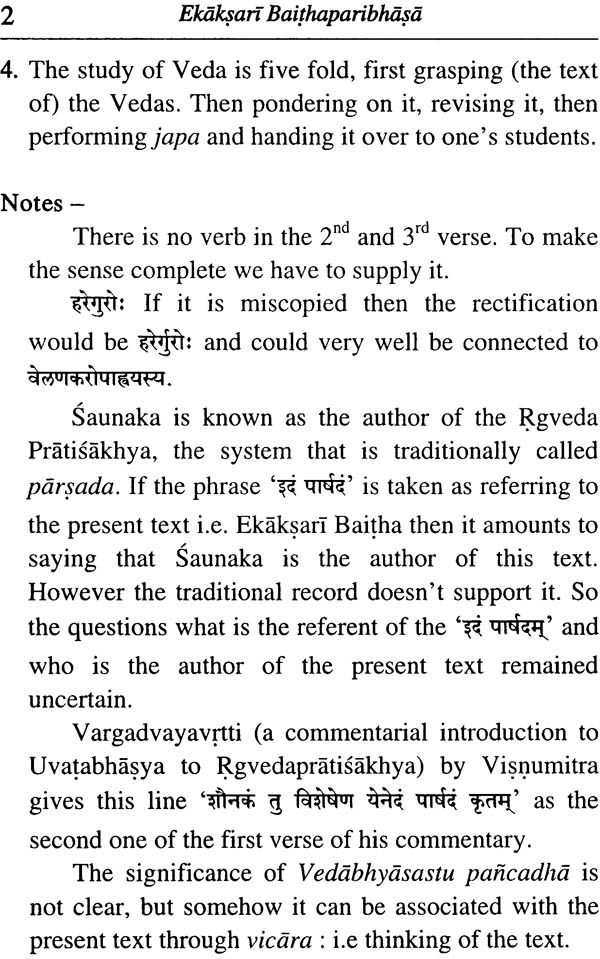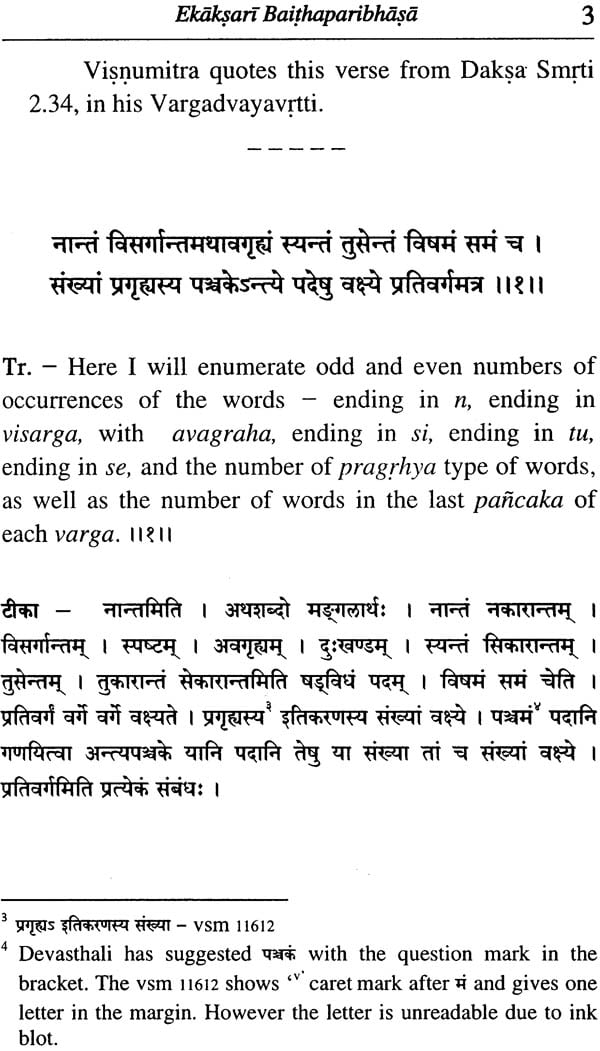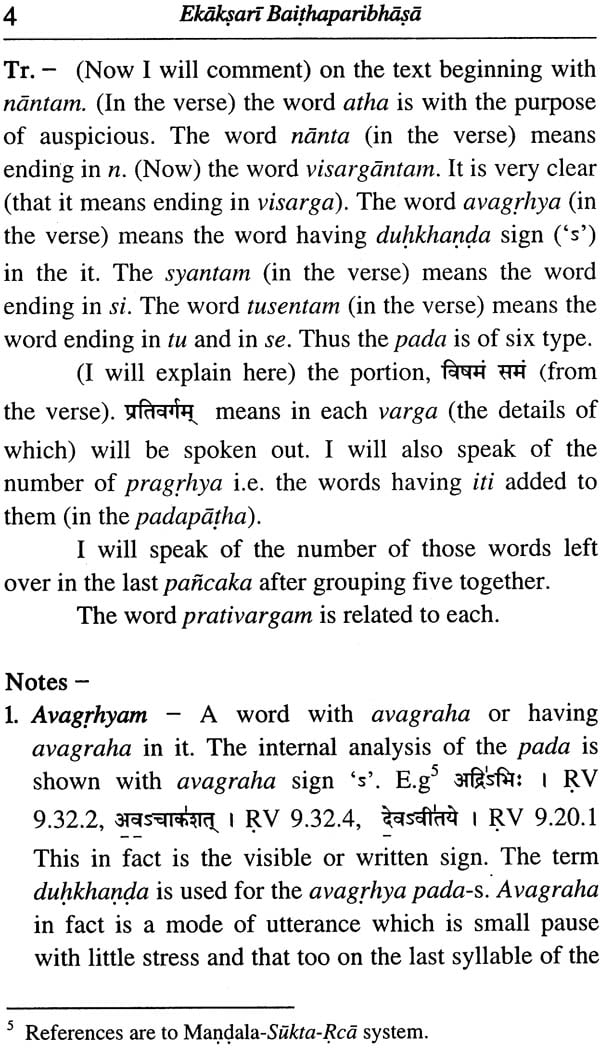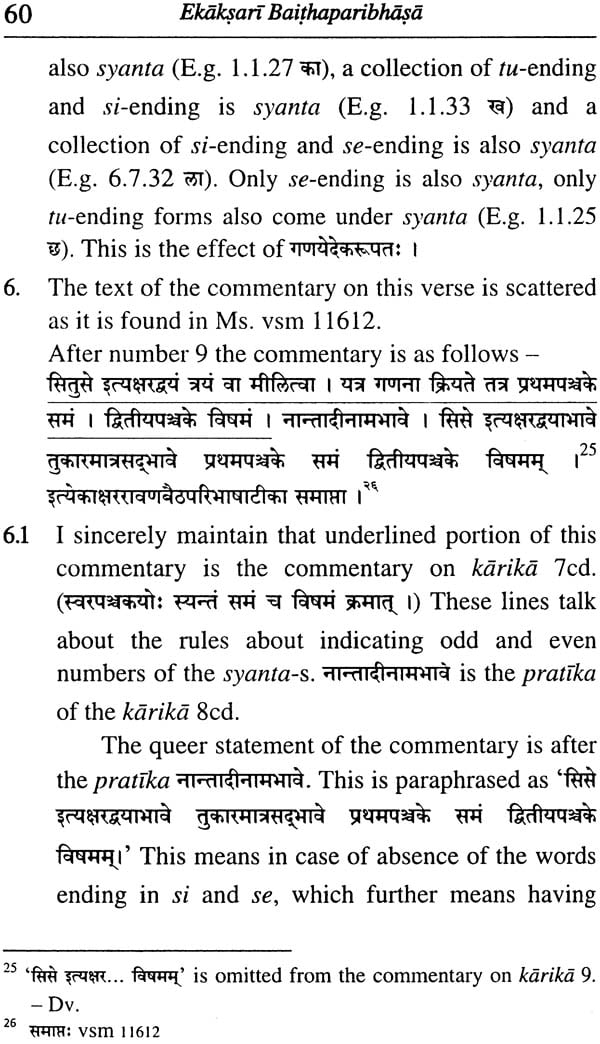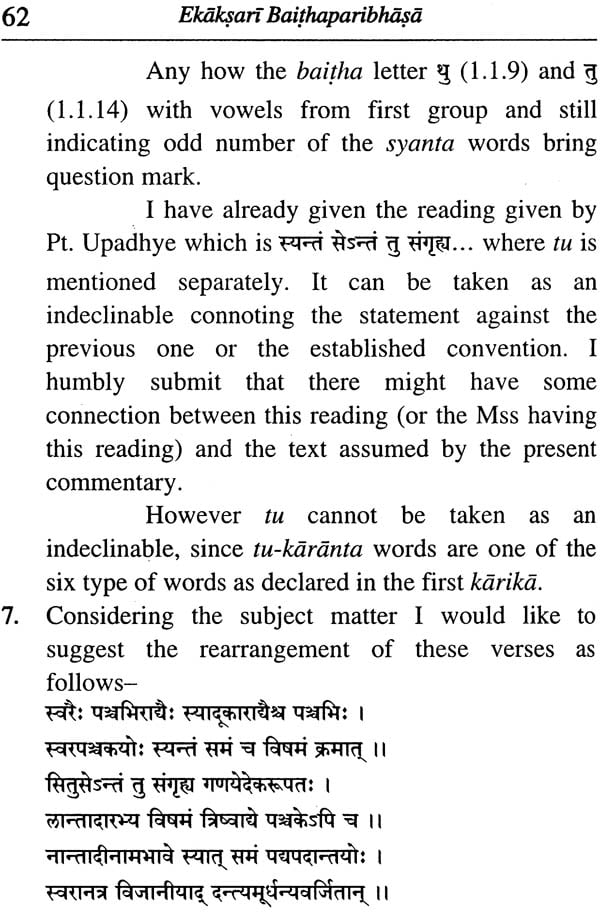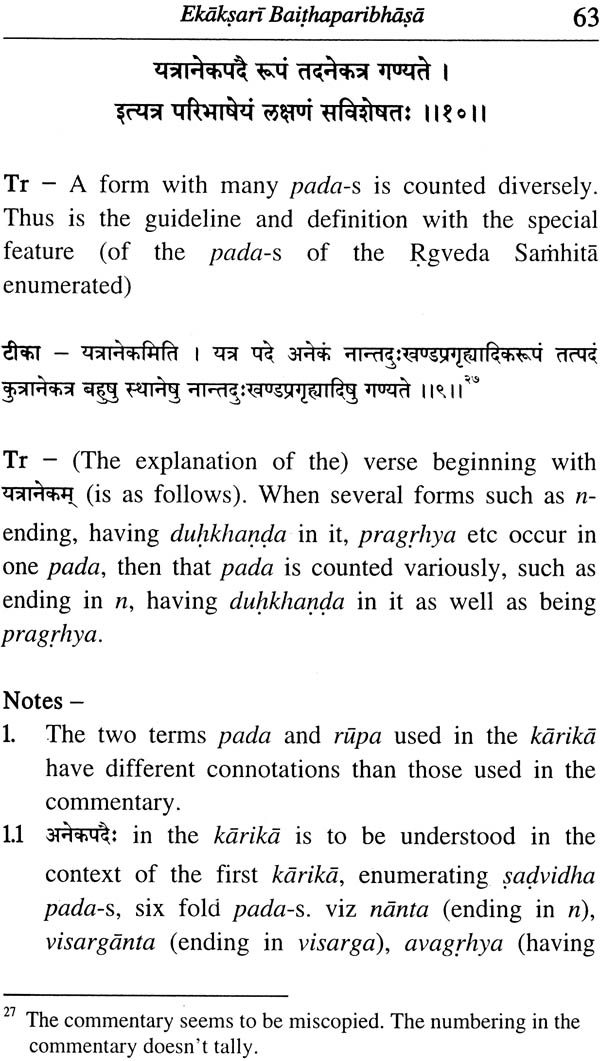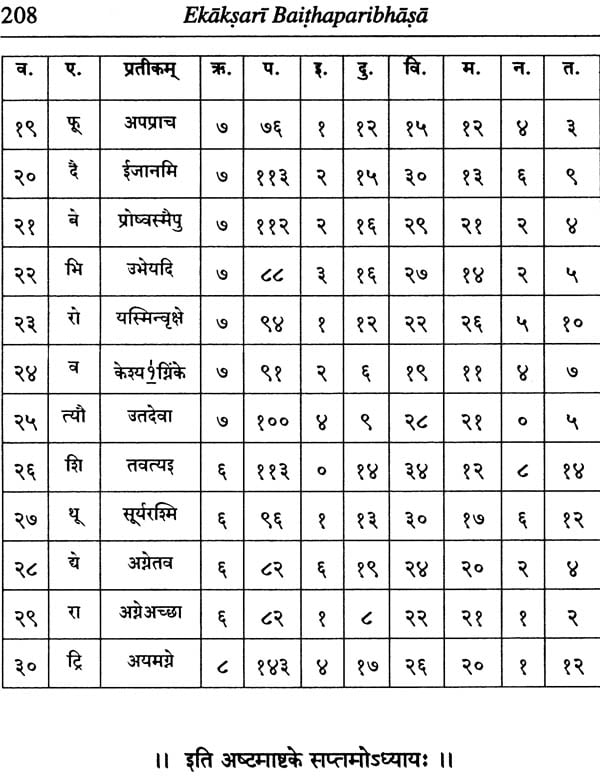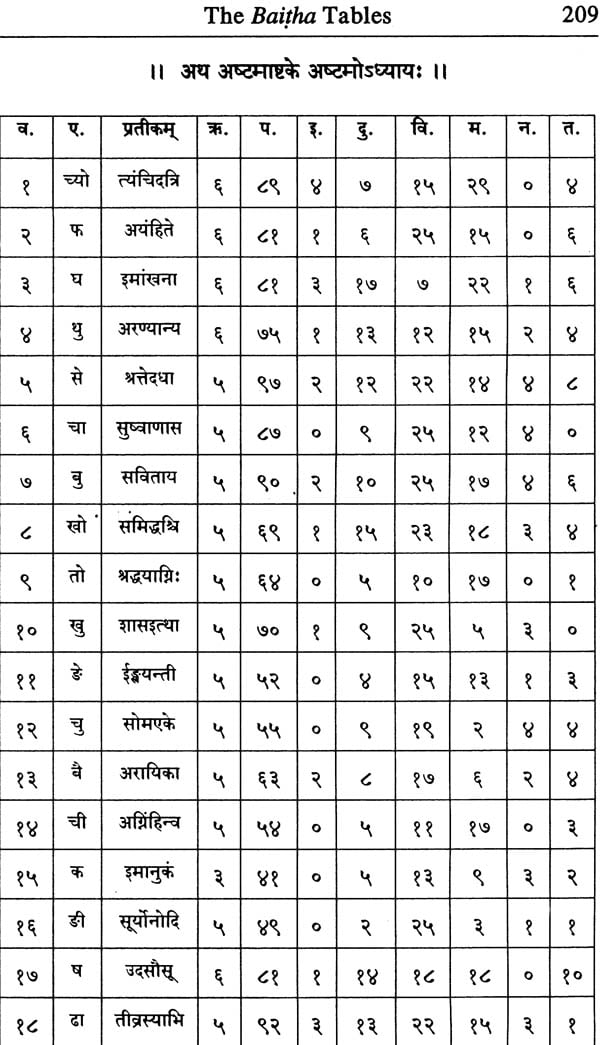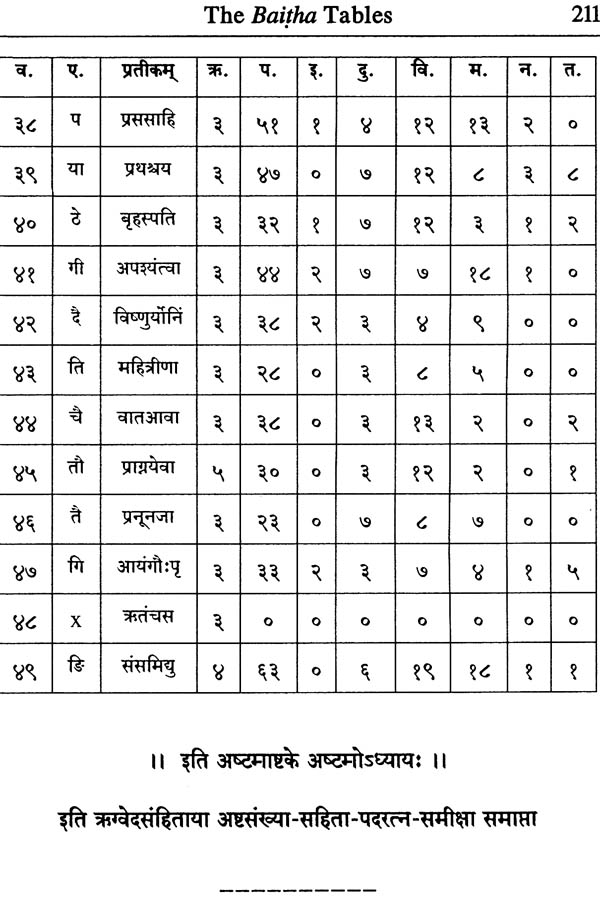
Ekaksari Baithaparibhasa with the Commentary Along with Translation & Notes
Book Specification
| Item Code: | NAJ694 |
| Author: | Dr. Mrs. Bhagyalata Pataskar |
| Publisher: | Vaidika Samshodhana Mandala, Pune |
| Language: | English |
| Edition: | 2014 |
| Pages: | 252 |
| Cover: | Hardcover |
| Other Details | 8.5 inch x 5.5 inch |
| Weight | 350 gm |
Book Description
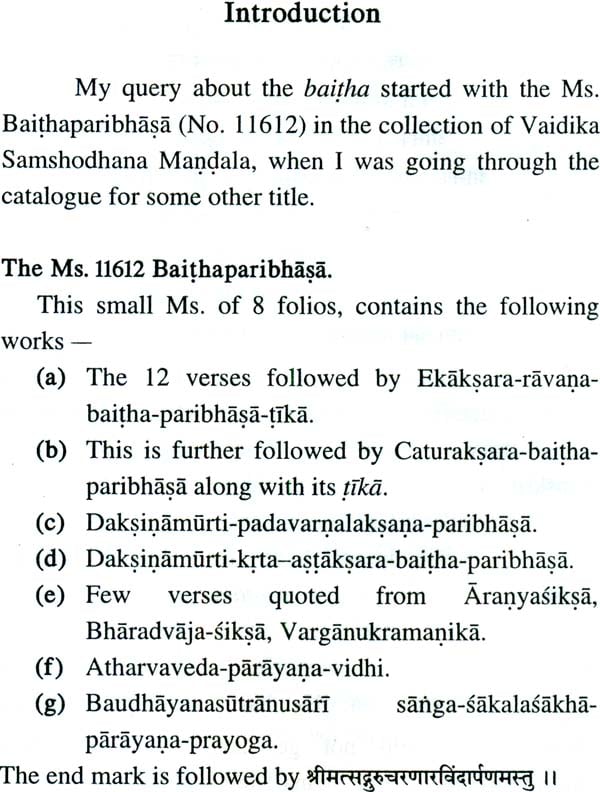

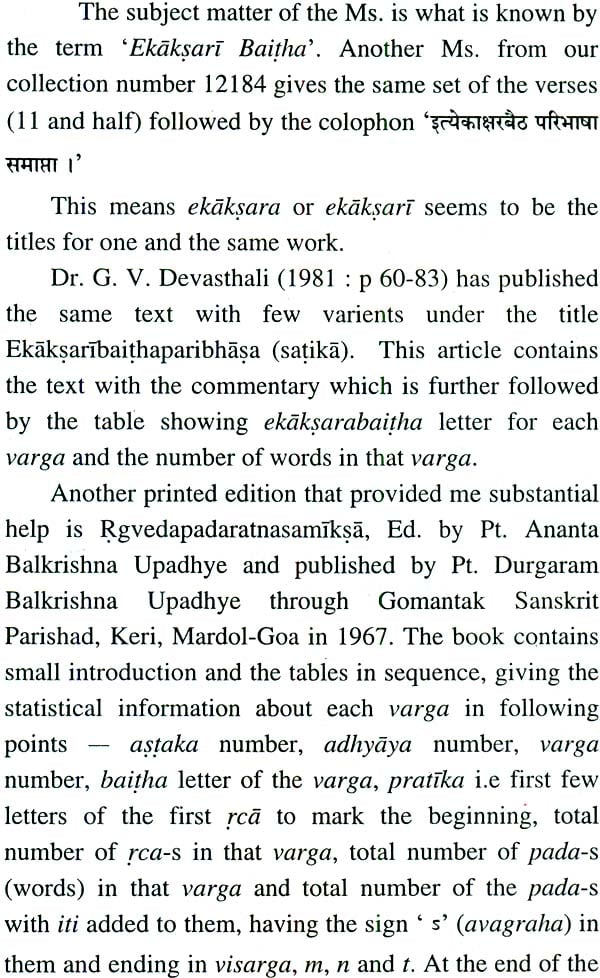
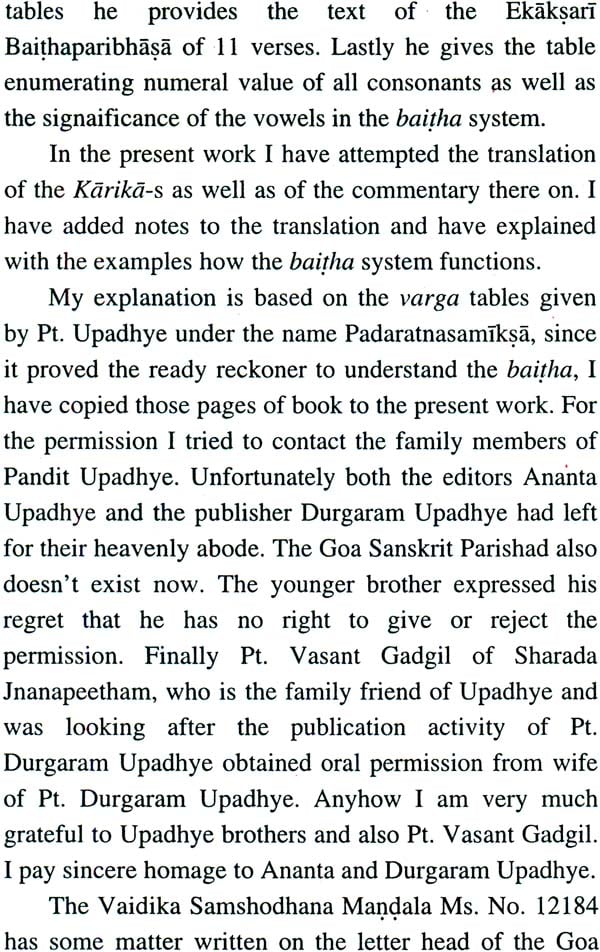
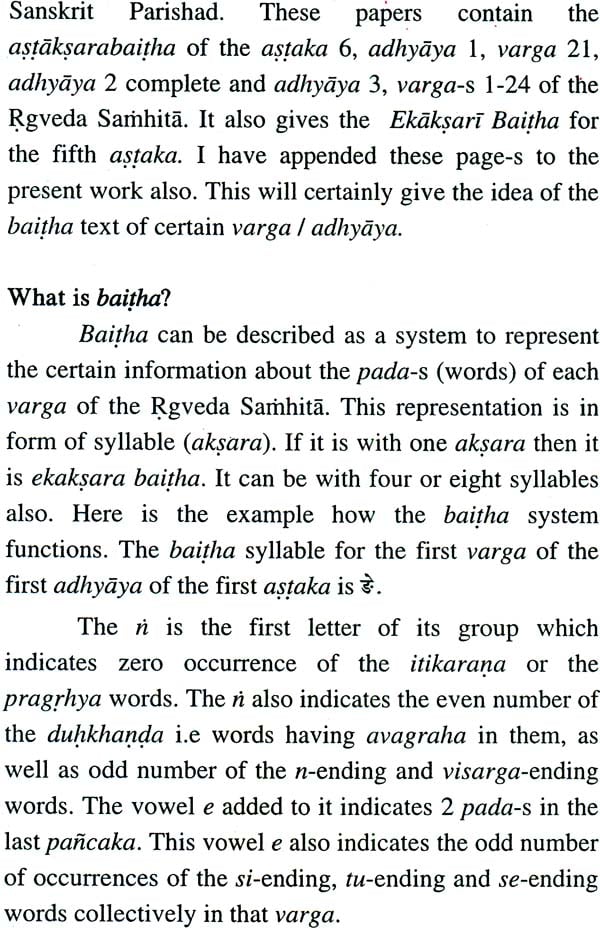
Foreword
In India there are two traditions of Vedic studies. The first relates to the oral preservation of the Vedic texts. The second relates to the interpretation of Vedic texts. In both of these traditions there have been great scholars. The famous sentence prescribes that the oral preservation as well as intellectual understanding of the Veda is a sacred duty of a Brahmana and it is expected that he should carry out both these duties without any practical aim in view. Of course, it may be observed that by and large, the first part of the duty is fulfilled by the Indian scholars in a more faithful manner than the second part. Thus even though it is true that some Vedic texts were not preserved by the Brahmins due to some reasons, at least some texts Rgveda, Madhyandina Yajurveda Samhita of the White Yajurveda, Taittiriya Samhita and Brahmana of the black Yajurveda, etc. are some of the texts which have been extremely well preserved in the oral tradition. Although commentaries on many Vedic texts are available, the tradition of the study of the meaning of the Vedic texts has been comparatively neglected by the Indian scholars.
In the first tradition, scholars of the Veda used to study not only the Samhita texts, but also the Padatexts of these Samhitas and also some other mechanical combinations of them called Vikrtis (modifications) in which Krama, Jala and Ghana occupy a more important place. A further study of the Vedic texts is called Anukramanitexts which are a kind of index of the Vedic texts. The text called Baitha is a subvariety of Anukramanitexts, In the present work the text called BaithaParibhasa is edited alongwith the commentary on it and the original metrical text and the commentary on it has also been translated into English by Dr. Bhagyalata Pataskar. The text is also called Ekaksari or Ekaksara Baitha.
In the Introduction the editor has explained properly the nature and significance of the work. The Baitha-texts have letters representing numbers. In order to list words these works give the lexical information in nutshell, in one code letter or sometimes in four or eight letters. Thus for example in Ekaksari Baitha system the letter stands for zero when the number of Pragrhyas is to be indicated. The code letters come at the end of the Padapatha of each Mantra, particularly in the case of Kanva White Yajurveda. They also occur at the end of the Khanda of the Samhita, Padapatha and the Gana of the Samaveda. These mystic letters are a kind of aide memoire and by knowing the numerical value of letters one can identify the number of words or their accents etc.
A lot of scholars like P. Visalakshy, S. D. Satavalekar, Aithal, G. V. Devasthali etc. have previously worked on this topic and Dr. Pataskar has adequately made proper use of the earlier literature.
This text and the translation accompanied with introduction illustrate how the traditional Vedic scholarship have deeply studied each and every aspect of the Vedic literature. The present work therefore deserves to be well received by the modem scholars whole heartedly.
Contents
| | Foreword | |
| 1. | Introduction | i-xx |
| 2. | Ekaksari Baithaparibhasa with the commentary (Tr. and Notes) | 1-73 |
| 3. | The Baitha tables | 74-211 |
| 4. | Specimen of Ekaksari Baitha | 212-215 |
| 5. | Specimen of Astaksari Baitha | 216-220 |
| 6. | Caturaksara Baithaparibhasa text with commentary | 221 223 |
| 7. | Daksinamurtipadavarnalaksana paribhasa | 224-225 |
| 8. | Daksinamurtikrtaastaksara baitha paribhasa | 226-227 |
| | Bibliography | |

